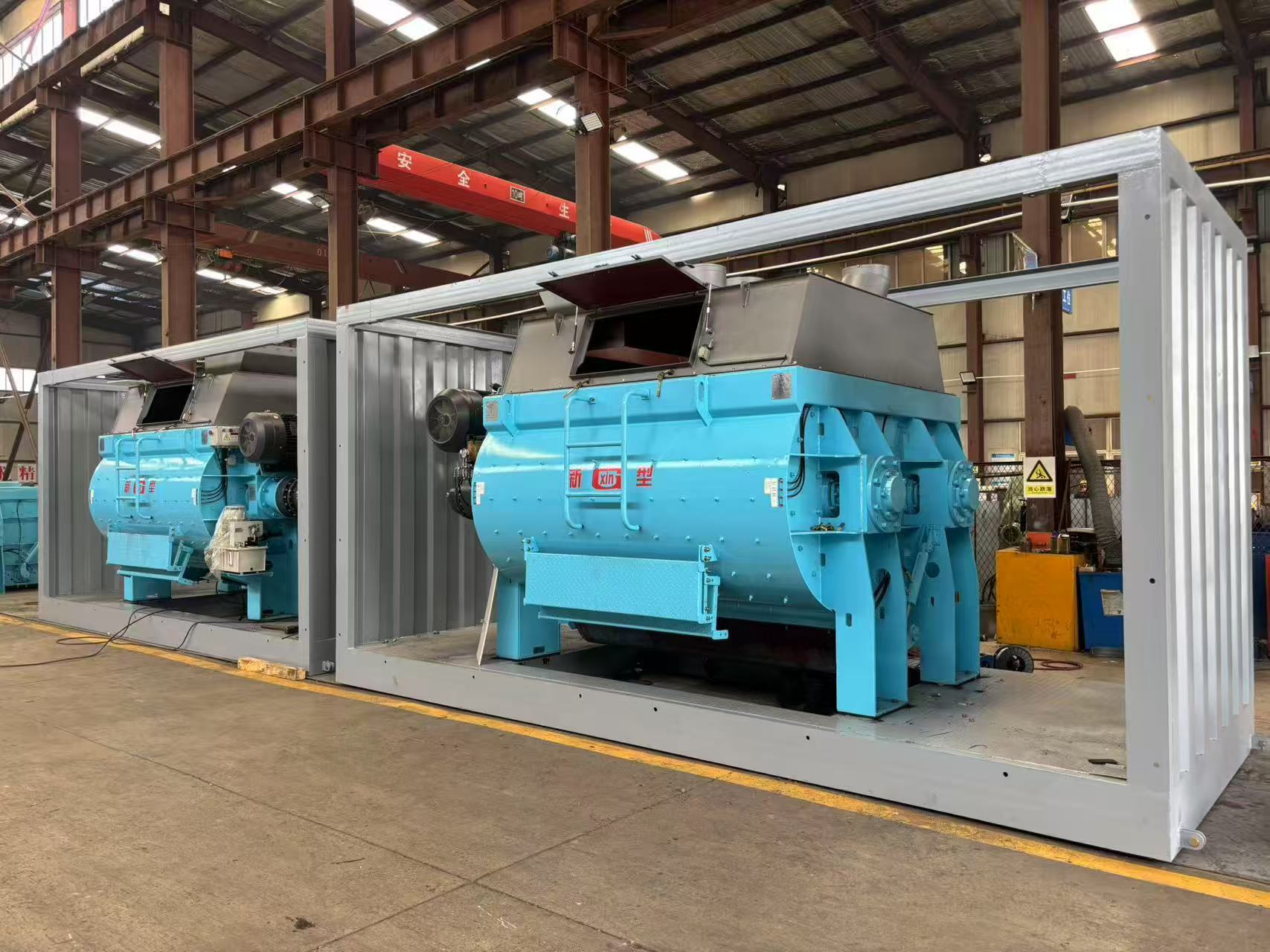Double-shaft forced concrete mixer: High efficiency, energy saving and quality improvement
Release Time:
2025-08-21
Source:
With the continuous improvement of the quality requirements for concrete in construction projects, the double-shaft forced concrete mixer, with its outstanding performance, has become the core configuration of modern concrete batching plants. The concrete batching plants of Qingdao Xinxing Construction Machinery Co., Ltd., which adopt this type of mixer, have seen a production efficiency increase of over 30% compared to traditional equipment, and the rate of concrete homogeneity compliance has exceeded 98%, significantly promoting the technological upgrade of the construction materials industry. Please provide the text you want to be translated.
The core advantage of the twin-shaft forced mixing host lies in its powerful mixing capacity. This equipment features two parallel arranged mixing shafts, with the mixing blades on the shafts arranged in a spiral and crisscross pattern. During operation, the blades rotate in opposite directions, generating intense shearing, squeezing and overturning effects. This unique mixing mechanism enables cement, sand, gravel, and admixtures to be thoroughly mixed within 15 to 30 seconds, completely resolving the issues of uneven mixing and numerous dead corners found in traditional self-falling mixers. The head of a large commercial concrete enterprise stated that after using the twin-shaft mixer, the standard deviation of the 28-day compressive strength of C30 concrete decreased from 2.5 MPa to 1.8 MPa, significantly enhancing the safety of the engineering structure. Please provide the text you want to be translated.
In terms of production efficiency, the twin-shaft forced mixing host stands out particularly. The mainstream models have a theoretical production capacity of 60-240 cubic meters per hour per unit, which can meet the needs of different projects ranging from small and medium-sized ones to large-scale infrastructure projects. It has a strong continuous operation capacity and a stable mixing cycle. Coupled with an automated feeding system, it can achieve uninterrupted production. According to statistics, the daily production capacity of a mixing station equipped with this host can reach 1.5 times that of traditional equipment, effectively reducing the labor and management costs per unit of concrete. Please provide the text you want to be translated.

Another highlight of this equipment is its wide material adaptability. Whether it is dry-hard concrete, plastic concrete, or special high-performance concrete, the double horizontal shaft main machine can achieve precise mixing. For the mixing requirements of large-sized aggregates (with a maximum particle size of up to 80mm) and high-dose mineral admixtures, by optimizing the blade angle and mixing speed, it can ensure uniform dispersion of materials and avoid segregation. In the production of prefabricated building components, its mixing effect on lightweight concrete and fiber concrete has been widely recognized in the industry. Please provide the text you want to be translated.
Energy conservation, reduced consumption and intelligent upgrading have become new highlights. The new generation of double horizontal shaft mainframe adopts variable frequency speed regulation technology, which can adjust the stirring speed in real time according to the characteristics of the materials, saving 15% to 20% of electricity compared with traditional equipment. At the same time, it integrates an intelligent sensing system that can monitor parameters such as stirring current and material ratio in real time, and achieve remote diagnosis and production optimization through a cloud platform, significantly reducing equipment failure rates and maintenance costs. Please provide the text you want to be translated.
With the in-depth advancement of green building and intelligent construction policies, the twin-shaft compulsory mixing host, featuring high efficiency, high quality and energy conservation, has become the core choice for the technological upgrade of concrete mixing stations, providing solid equipment support for the high-quality development of the construction industry.
Related Information
